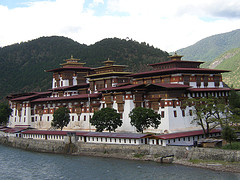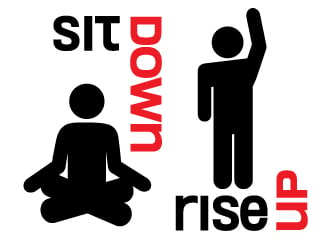by Davee Evans
Some things poignantly remind me that I’ve just moved back to San Francisco — a city that I so dearly love — like cold, foggy evenings; bells ringing from street cars; or discovering my housemate has a naked yoga practice (nothing quite like urdhva dhanurasana to greet you in the morning.)
And I’m excited to move back just as the SF Shambhala Center takes a leap: more than doubling in size and moving from the boonies to downtown, assuming the final permits are approved. This will crown the center the regional dzong, a Tibetan word for “fortress”.
Not only is the Karmapa into violent video games, but calling a meditation center a fortress is normal. What’s up with the aggressive terminology? Doesn’t fortress sound like it’s impossible to join, like you have to climb the walls or pass a test before they lower the drawbridge?
Since I haven’t asked the Sakyong why this particular term, but I like Buddhist terminology, I’ll make some meandering, arm chair guesses.
One is that the idea of practice always involves creating a kind of boundary. It could be deciding not to engage thoughts or emotions, and specifically not answering one’s cell phone, for say 30 minutes a day. Or it could be bricking oneself into a mountain cave for a few years. But still there is a sense of boundary and creating a supportive container for practice. The ultimate fruition might be more openness and inclusiveness, but the practice seems to often have a measure of retreating and excluding. That might seem backwards though, like calling a meditation center a fortress.
And then we have mahakala and chöd practice, where the Tibetan’s intentionally evoke the symbolism or experience of aggression and violence and fear as a practice. I haven’t attempted either, since I have a hard enough time with the aggression and fear that arises naturally still. But apparently once you get further along maybe you’re so chill you have to whip this stuff up.
Perhaps historically Tibetan organizations weren’t worth salt without a picturesque castle. Or this is just another example of redefining a term and poking at our notions of what protection and defense means.
Any takes on what a fortress of meditation might be?
Battlements aside, I’m excited for San Francisco and for the center’s impending growth spurt and being part of that. I hear Trungpa Rinpoche once said, “Find the largest shrine room you can” and there does seem to be a relationship between the size of a center and the community that gathers there. Since contemplative Buddhism is still collectively smaller than even the more fringe Christian groups in America, there also seems like plenty of room to grow and opportunity to support that.


